The rose-cut diamond, with its warm and captivating appeal, has a rich history that dates back centuries. In recent years, it has experienced a surge in popularity as individuals seek unique and breathtaking alternatives to contemporary diamond shapes.
Originating in the 16th century when gems were meticulously shaped by hand, the rose cut carries a distinct charm due to its historical significance and the primitive techniques employed during its creation. Its design is notably simpler compared to the intricate facets of modern brilliant-cut diamonds.
The allure of the rose cut lies in its simplicity, which captivates many admirers. However, others may prefer the more dazzling aesthetics of contemporary diamond cuts. Regardless of personal preference, it is undeniable that the rose cut is an exceptionally rare diamond cut in today’s market.
In this article, we will delve into the history of the rose-cut diamond and explore its distinguishing features that set it apart from both historic and modern cuts. We will also discuss the advantages and disadvantages of this cut, highlighting why it may be a worthwhile choice for prospective buyers.
Continue reading to discover more about the fascinating world of rose-cut diamonds!
DESIGN YOUR OWN ENGAGEMENT RING: START WITH A SETTING OR START WITH A DIAMOND. IT’S REALLY UP TO YOU!

History Of Rose Cut Diamonds
The rose cut, a diamond cut that traces its roots back to the 16th century, remains relevant and sought after even today. These diamonds can be found in jewelry pieces dating back to the Georgian and Victorian eras, showcasing their enduring appeal.
In the 19th century, the rose cut faced a decline in popularity as other diamond cuts, such as the old European cut, gained prominence. The rise of innovative jewelry designs further diminished the use of the rose cut, as brilliant-cut diamonds took center stage in the 20th century. Modern technology also played a role in emphasizing the importance of diamond brilliance and fire, making cuts that maximized these qualities more desirable.
In an attempt to recreate some of the brilliance, antique jewelry settings often featured rose-cut diamonds backed with a thin layer of shimmering metal foil, enhancing the reflection of light back up to the diamond’s crown.
However, the rose cut has experienced a resurgence in popularity in recent years, with many celebrities favoring these distinctive diamonds over contemporary options. The unique charm and character of rose-cut diamonds have captivated a new generation of jewelry enthusiasts, making them a sought-after choice once again.

What Is A Rose Cut Diamond?
The rose-cut diamond is a unique gem known for its distinctive appearance. Its top is domed, featuring multiple triangular facets arranged in a design reminiscent of a rose.
The name “rose-cut” is derived from the diamond’s resemblance to the petals of a rosebud. When viewed from above, the facets on the surface of a rose-cut diamond radiate outward, akin to rose petals extending from the stem.
The complexity of the rose pattern can vary, with rose-cut diamonds having as few as three facets or as many as 24. In addition to their rose-like facet arrangement, these diamonds possess a distinct shape compared to contemporary diamond cuts.
Unlike modern diamond cuts that have a pronounced pavilion, rose-cut diamonds lack this pointed bottom part, resulting in a flatter lower half. This variation in form has three notable effects when comparing the appearance of rose-cut stones to contemporary diamonds:
- Enhanced Size Perception: The flat shape of rose-cut diamonds makes them appear larger when viewed from above.
- Low Profile: Due to their flat form, rose-cut diamonds have a modest profile and do not protrude significantly from their settings. This makes them well-suited for active individuals and comfortable to wear.
- Translucence: Without a pavilion, rose-cut diamonds exhibit lower reflection compared to modern cuts. They have a more translucent, glass-like appearance, offering a unique visual charm distinct from the dazzling brilliance of many contemporary diamond cuts.
While spherical rose-cut diamonds with a symmetrical rose pattern are common, this diamond cut can also be found in various other shapes. Marquise, oval, cushion, and even pear-shaped rose-cut diamonds are available, providing versatility in design options.
Rose Cut Diamonds Cutting Process
Unlike the standardized shape of brilliant-cut diamonds, each rose-cut diamond possesses a unique facet arrangement that requires a sophisticated cutting technique. Creating a rose-cut diamond can be a time-consuming process, often taking several days to complete.
The initial step involves assessing the quality of the raw diamond and determining its optimal shape and facet pattern. The diamond is carefully marked and placed in a machine that generates a 3D scan to guide the laser cutting process, shaping it into its desired form, whether it be round, cushion, oval, or another shape.
Highly skilled diamantaires then examine the gem and select the most suitable approach to facet it, aiming to enhance its beauty, maximize its weight, improve its clarity, and showcase its color. The faceting process takes place on a spinning table coated with diamond dust, which is the only material strong enough to cut a diamond effectively.
Using a specialized instrument resembling claws, the diamond is securely held in place and manually guided onto the rotating disk, allowing the facets to be meticulously formed. This careful and precise manual work ensures that the diamond is shaped and polished to reveal its inherent brilliance and sparkle.
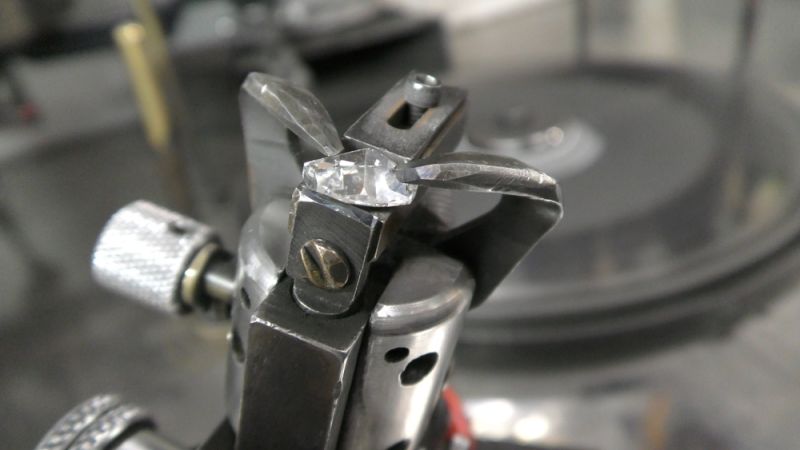
The 4 C’s Of A Rose Cut Diamond – Cut, Color, Clarity & Carat
The beauty and quality of a diamond are determined by its four main characteristics, commonly referred to as the Four Cs: Cut, Color, Clarity, and Carat Weight. These factors work together to define a diamond’s appearance and value.
Cut: The cut of a diamond refers to the facets, angles, and proportions of the stone. It affects how well the diamond interacts with light and determines its brilliance and sparkle.
Color: The color grade of a diamond assesses how colorless or tinted it appears. The less color present, the higher the grade.
Clarity: Clarity refers to the presence of internal and external flaws, known as inclusions and blemishes, respectively. A higher clarity grade indicates fewer imperfections.
Carat Weight: Carat weight measures the size and weight of a diamond. One carat is equivalent to 200 milligrams.
Now, let’s explore how these characteristics specifically apply to rose-cut diamonds.
Cut: The rose cut was originally designed to showcase its beauty in candlelight, with cutters tailoring each stone individually. Most rose cuts feature a flat bottom, no pavilion, and a domed top with 24 facets. This unique cut allows for a low setting that sits close to the skin, distinguishing it from traditional diamond cuts.
Color: Rose-cut diamonds exhibit great adaptability when it comes to color. The domed top and delicate luster beautifully complement warmer tones and alternative gem hues. Champagne, translucent white, grey, black, yellow, and salt and pepper diamonds with black and white inclusions are commonly found in rose cuts.
Clarity: Due to the lack of a pavilion, rose-cut diamonds reflect less light compared to other cuts. This gives them a clear, glass-like sheen and enhances their transparency. Imperfections inside the diamond are highlighted rather than concealed, adding charm and a vintage feel to the stone.
Carat Weight: Rose-cut diamonds appear larger in diameter compared to round diamonds of the same carat weight. While they are available in various carat weights, rose-cut diamonds are relatively rare, accounting for a small percentage of contemporary cut gems. Finding a specific carat weight in a rose-cut diamond may require more time and effort due to its rarity.
Understanding these characteristics can guide you in selecting a rose-cut diamond that meets your desired qualities and carat weight, appreciating its uniqueness and charm.
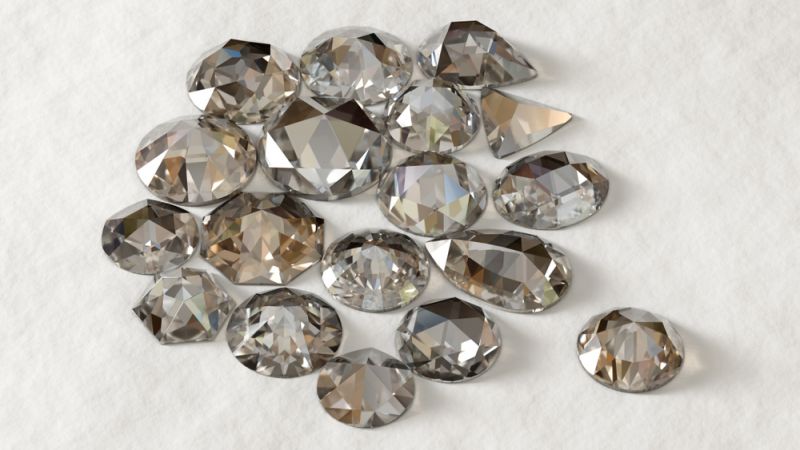
The Price Of Rose Cut Diamonds
The pricing of rose-cut diamonds can be less readily available compared to more common diamond cuts due to their scarcity. However, it is evident that the cost of a rose-cut diamond can fluctuate based on factors such as clarity, color, shape, size, and market demand for specific types of rose-cut diamonds.
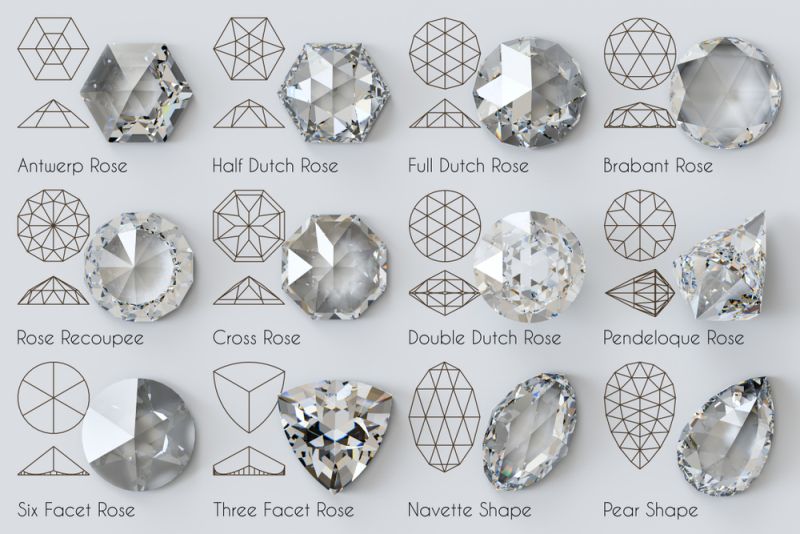
How To Choose An Ideal Rose Cut Diamond
When selecting a rose-cut diamond, it’s important to focus on your personal preferences and desired characteristics. If you prefer a clear and flawless appearance, investing in a higher clarity grade is recommended, as any imperfections may be more visible in the translucent cut.
However, if you appreciate the charm and uniqueness of antique and vintage jewelry, you can embrace the individual character that each flaw adds to the diamond.
Color is another aspect that depends on personal preference, as there are no widely accepted industry standards favoring one color over another for rose-cut diamonds. Given that the shape is known for its warmer tones and unconventional colors, embracing some color in the diamond can be a desirable choice.
When it comes to shape, consider the type of settings you prefer and your overall aesthetic preference. The rose-cut diamond offers versatility and is available in various shapes, including round, oval, square, hexagon, kite, rectangle, rounded square, and more. With numerous options to choose from, it’s important to narrow down your choices before beginning your search.
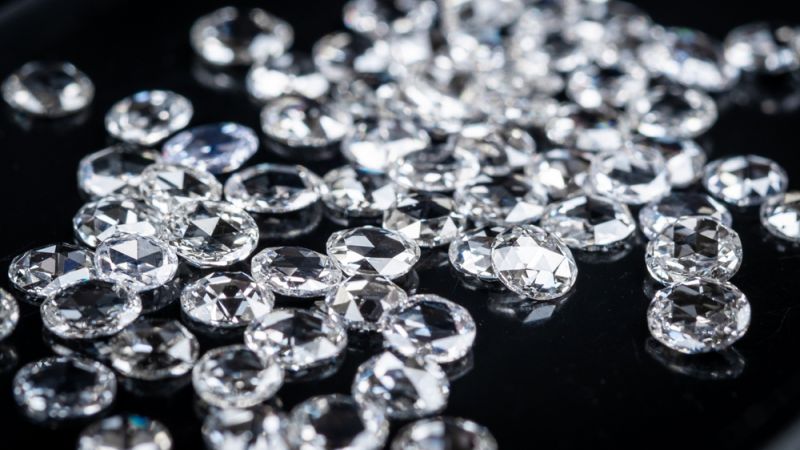
How To Keep Rose Cut Diamond In Perfect Condition
Rose-cut diamonds are more prone to chipping compared to standard round brilliant diamonds due to their shallower depth. While diamonds are known for their durability, they can still chip from a significant impact, become loose in a weaker setting, or get damaged from contact with other diamonds.
To mitigate the risk of chipping, it is advisable to choose a more secure setting for your rose-cut diamond, such as a halo or bezel setting, which provides additional protection.
To prevent scratches, it is recommended to keep your rose-cut diamond jewelry separate from other diamond pieces. When cleaning your ring, use a lint-free cloth dampened with warm water, mild soap, and a gentle toothbrush to gently remove any dirt or residue. For a quick clean, you can also immerse the ring in a professional cleaning solution. Additionally, it is important to have your ring professionally cleaned and the setting checked by a jeweler on a regular basis to ensure its longevity and address any potential issues.
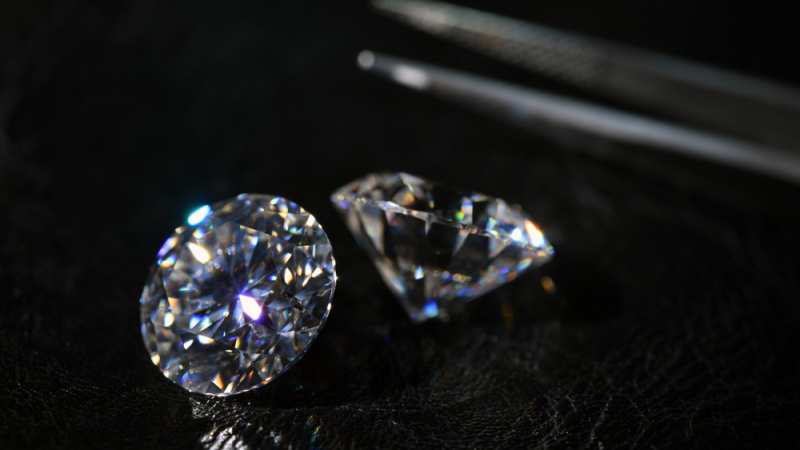
Rose Cut Vs. Brilliant Cut
Rose-cut diamonds and round brilliant-cut diamonds may both be round in shape, but they have distinct differences that set them apart:
Flat Top vs. Domed Top:
A round brilliant cut diamond has a broad, flat table that allows light to enter and reflect off the diamond, contributing to its brilliance. In contrast, a rose-cut diamond has a rounded table and a domed top with triangular facets arranged in a rose-like pattern.
Different Profiles:
Rose-cut diamonds have an exceptionally flat profile, sitting closer to the setting compared to the higher profile of a round brilliant cut diamond. This makes a rose-cut diamond combined with a bezel setting an ideal choice for a low-profile ring design.
Size Differences:
Due to its flat shape, a rose-cut diamond can often appear larger in diameter than a round brilliant-cut diamond of the same carat weight. This creates an illusion of greater size.
Brilliance & Fire:
Unlike the round brilliant cut, which is known for its brilliance and fire, the rose cut has a more subtle and understated appearance. It has a crisp, glass-like look that lacks the intense sparkle of a round brilliant cut diamond. Many people appreciate the modest and subtle nature of rose-cut diamonds.
Overall, these distinctions in shape, profile, size, and appearance make rose-cut diamonds a unique and appealing choice for those seeking a more understated and distinctive diamond option.
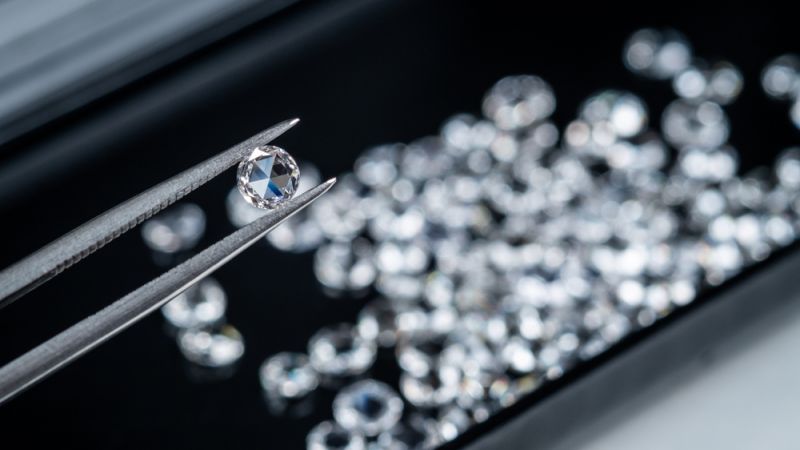
Is Rose Cut Diamond Worth It?
Certainly! Rose-cut diamonds indeed possess a distinctive charm and romantic allure that sets them apart. Their vintage appeal and timeless beauty make them a popular choice for those seeking a touch of tradition.
In addition to their aesthetic appeal, rose-cut diamonds offer a unique advantage in terms of value. Due to their flat shape and larger diameter, they can give the illusion of a larger diamond for your budget. If the shape of a rose-cut diamond appeals to you, it can be a great choice that provides excellent value for your investment.
Rose Cut Diamond Pros & Cons
| PROS | CONS |
|---|---|
| Appears larger | Less fire and sparkle than modern cuts |
| Countless different shapes | They are rare in the market |
| Eye-catching uniques, even with all the flaws | As they’re cut by hand, you’ll often find tiny imperfections |
| Low profile aids in a more active lifestyle | Lack of pricing information |
| The colors look great on it | – |
| More glass-like sheen than other diamonds | – |
Final Word
Ultimately, the decision to invest in rose cut diamonds depends on your personal preferences and priorities. If you prioritize sparkle and immediate attention, rose cut diamonds may not be the best choice as they do not possess the same level of brilliance. However, if you seek a unique, vintage-inspired, and understated diamond shape, then rose cut diamonds are perfect for you. Their simplicity and low-profile design make them ideal for everyday wear without getting in the way.
It’s important to note that rose cut diamonds often have asymmetry and small flaws, but these imperfections contribute to their individual beauty. Each hand-carved rose cut diamond is one-of-a-kind, enhancing their value and desirability, even if they don’t exhibit the same level of shine as modern brilliant cuts.


